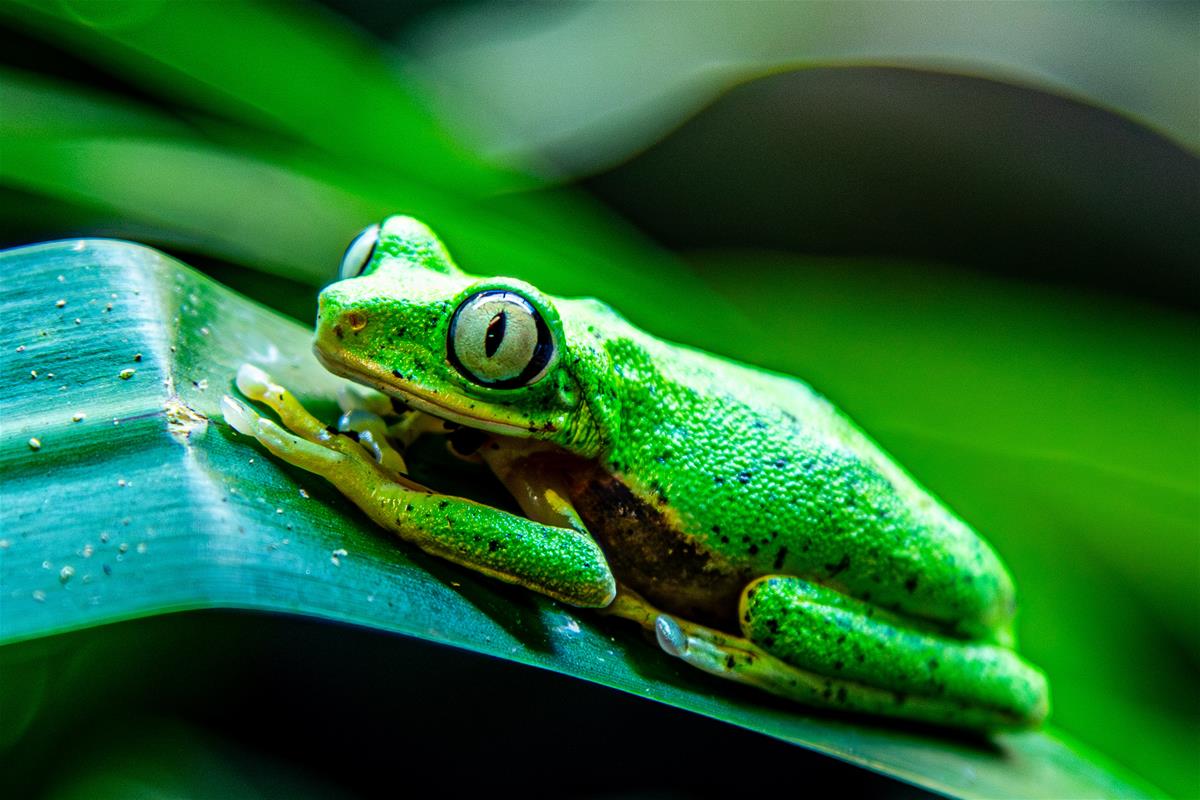

Location at the Zoo
Americas
Global Range
Central America
Lemur leaf frog
Agalychnis lemur
The Lemur leaf frog is a small, nocturnal tree frog with large, protruding golden or bronze eyes and a slim, delicate body. Its skin is bright green by day (for camouflage) and becomes brownish or mottled at night, a colour change that helps it blend in with different surroundings. Unlike many tree frogs, its fingers and toes are long and thin with well-developed adhesive pads. This frog’s name comes from its lemur-like eyes and expressive face.
HEAD AND BODY LENGTH
3 to 4 centimetres (1.2 to 1.6 inches)
WEIGHT
Typically less than 5 grams
Conservation Status: IUCN

Distribution
Once widespread, the Lemur leaf frog is now found in isolated pockets of Costa Rica and Panama, mostly in protected cloud forest reserves.
Habitat
- Habitat loss due to deforestation and agriculture
- Chytridiomycosis, a deadly fungal disease affecting amphibians worldwide
- Climate change disrupting breeding cycles and humidity levels
- Small, fragmented populations with limited genetic diversity
Diet
Insectivorous. Feeds on small insects and other invertebrates, including flies, ants, and moths, which it captures with its sticky tongue during nocturnal hunts.
Reproduction
Breeds during the rainy season. Males call to attract females, and mating (amplexus) occurs on vegetation overhanging water. Females lay eggs on leaves, and when the tadpoles hatch, they drop into the water below to continue development.Adaptation
- Camouflage: Bright green colour by day, brown at night for environmental blending
- Vertical pupils: Suited for low-light hunting
- Adhesive toe pads: Excellent climbing ability in wet foliage
- Lightweight body: Ideal for perching on leaves and twigs











